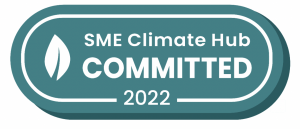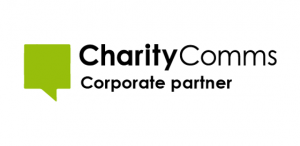SEO is an important part of any digital marketing strategy for nonprofit and can help your organisation achieve your digital marketing goals.
The importance of SEO for charities lies in the fact that over 86% of internet users now search online before making a donation, and over 50% use a search engine every day.
However, the process of optimising content for search engines can be very complicate. A large number of common SEO issues can prevent Google and other search engines from finding your website and displaying your content, so it’s important to understand what SEO issues mean and how to fix them in order to optimsze for search engines.
To help you out, here is our guide to what common SEO issues like 404 and 500 errors mean and how to fix them.
In this article:
- What is a 404 error?
- How to fix a 404 error
- What is a 500 error?
- How to fix a 500 error
- What are orphan pages?
- How to fix orphan Pages
- What is a redirect chain?
- How to fix a redirect chain
- What are Broken Redirects?
- How to fix Broken Redirects
- What are Redirect Loops?
- How to fix Redirect Loops
- What are missing meta descriptions?
- How to fix missing meta descriptions
- HTTPS page has internal links to HTTP
- How to fix HTTPS pages linking to HTTP
What is a 404 error?
404 – Not Found is one of the most common 4xx errors and indicates that the requested URL does not exist.
Links pointing to the 404 URLs are widely known as “broken links”.
404 URLs on your website damage the user experience, as people cannot access the page or file via a link they click. Besides, internal links to 404 URLs create unnecessary “dead ends” for the search engine crawlers and can waste your crawl budget.
How to fix a 404 error
To fix a 404 error, review the list of 404 URLs on your website.
You should review the internal outgoing links to all the 404 pages reported and either remove these links or replace them with relevant links to live pages.
Alternatively, you can set the appropriate 301 redirects. It is especially important for the 404 pages with a decent number of external backlinks.
View this post for more details on how to fix a 404 error.
What is a 500 error?
URLs that return the 500 HTTP status code (Internal Server Error).
This code indicates a potential problem with your web server.
These URLs can be accessed neither by your website visitors not by the search engines crawlers. Crawlers will be forced to abandon the request while people will most likely leave your website.
How to fix a 500 error
To fix a 500 error, review the list of URLs that return 500 HTTP status code.
Try to reproduce the server error reported by Site Audit for these URLs in your browser. You should also check the error logs for your server. If this is an ongoing problem and a lot of internal pages return 5xx code, you need to check with your hosting provider or with your web developers.
You should also note that this can be a temporary issue, e.g., when the crawl took place during some maintenance on your website’s server.
View this article on how to fix a 500 error.
What are orphan pages?
Orphan pages of a website have no incoming internal links.
Search engine crawlers can only discover such pages from the sitemap file or from external backlinks. Website visitors won’t be able to get to this page from any other page on your website.
How to fix orphan Pages
Check your website navigation and link architecture to make sure all relevant pages are easily accessible.
View this article for more on how to fix orphan page errors.
What is a redirect chain?
Chaining redirects may inflict damage on the user experience, slowing down the page loading speeds. Besides, redirect chains complicate your website’s internal linking for the search engine crawlers.
How to fix a redirect chain
For a given URL, click on the number of inlinks to access the list of pages that have a link to the first URL in a chain. Where practically possible, replace links to redirecting URLs on these pages with direct links to the final destination URL in the redirect chain.
View this article for more on how to fix redirect chains.
What are Broken Redirects?
Chaining redirects may inflict damage on the user experience, slowing down the page loading speeds. Besides, redirect chains complicate your website’s internal linking for the search engine crawlers.
How to fix Broken Redirects
For a given URL, click on the number of inlinks to access the list of pages that have a link to the first URL in a chain. Where practically possible, replace links to redirecting URLs on these pages with direct links to the final destination URL in the redirect chain.
View this article on how to fix broken redirects.
What are Redirect Loops?
Redirect loop happens when a URL redirects to itself or when a redirect chain redirects to one of the URLs within the chain. This creates an infinite loop of redirects.
Redirect loop will typically result in “Too Many Redirects” error in the user’s browser and will be a “trap” for search engine crawlers.
How to fix Redirect Loops
If the URL is not supposed to redirect, change its HTTP response code to 200.
For URLs that must be redirected, correct the final destination URL of the single redirect or redirect chain to the valid 200 page.
On those pages, we recommend replacing outgoing links to redirecting URLs with direct links to valid 200 pages.
View this article for more on how to fix redirect loops.
What are missing meta descriptions?
Pages that have an empty or missing meta description tag.
Without a meta description, you’re missing the opportunity to present the summary of your page content to the search engines. High-quality descriptions can sometimes be displayed in Google’s search results as search snippets.
How to fix missing meta descriptions
You should provide a unique meta description for each indexable page on your website to help search engines and people quickly understand what your page is about.
View this article for more on fixing missing meta descriptions.
HTTPS page has internal links to HTTP
If an internal link on your website brings people to an HTTP URL, modern browsers will show a warning about a non-secure page. This can damage your overall website authority and user experience.
How to fix HTTPS pages linking to HTTP
Check the “Internal outlinks” column in this report for the URLs with http://.
Edit the links on the affected pages so that they point to HTTPS versions. Make sure you link to HTTPS pages where possible.




